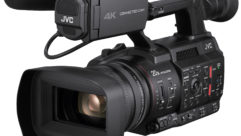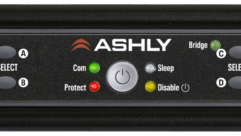On the Threshold of Discovery
Sep 1, 2001 12:00 PM,
NATHANIEL HECHT
SCIENTISTS HAVE QUOTED NUMBERS CONCERNING THE RANGE OF human frequency perception for years. But it was Drs. Fletcher and Munson, back in the 1920s, who tested thousands of people and stated that humans hear frequencies from around 20 Hz to 20 kHz. These numbers have been drummed into our professional collective consciousness by text books, psychology departments, audio training and manufacturer specs for so long that, for many years, no one really questioned them.
Yet it has been long understood that musical instruments obtain their unique sound characteristics due to harmonics or overtones that require an extended range of frequencies — beyond the instrument’s perceived frequency range. Spectral analysis has proven the presence of overtone series well above 20 kHz with many instruments — and even human speech — showing partials up to 40 kHz, and up to 100 kHz for triangles and cymbals. (J. Boyk, “There’s Life Above 20kHz — A Survey of Musical Instrument Spectra to 102.4kHz,” http://www.cco.caltech.edu/~boyk.)
Furthermore, a researcher named Oohashi tested subjects to determine how brain wave activity is affected by ultrasonic frequencies. (High-Frequency Sound Above the Audible Range Affects Brain Activity, AES Preprint No. 3207.) He determined that under blind conditions his subjects were responding to ultrasonic frequencies up to 60 kHz! Oohashi determined that the mechanism for transmission was bone conductivity to a small organ in the inner ear called the saccule, which is wired to the cochlea, the organ responsible for the majority of hearing perception in humans.
Another theory of ultrasonic hearing involves the rhythmic pulsation of the cilia in the inner ear. Prior to the observation of this pulsing, it was widely understood that the cilia of the inner ear would vibrate at different frequencies of perception allowing the cochlea to receive these signals. But when the cilia pulse as a group or groups, the theory is that this pulse is in response to frequencies well above the currently accepted audible range.
There are also theories on the way the brain uses ultrasonic frequencies. It has been proven that profoundly deaf people use ultrasonic detection to accurately perceive speech and tone (M. Lenhardt, et. al., “Ultrasonic Speech Perception,” Science, Vol. 253, July 1991). Recent theories postulate that ultrasonic frequencies provide directional cues to non-deaf brains as well. If proven, they could have wide-ranging implications for any program designed for placement, such as surround sound effects and sound mixes for various media. Further exploration into human ultrasonic perception could change the way manufacturers design their products. Many researchers are keeping quiet, waiting for more data before presenting their findings, but we’re bound to hear more about this research, and S&VC will, of course, present the news as it breaks. (Thanks to Dr. Paul Mills, chief engineer at Tannoy Limited, for additional information.)
On a separate note, we’re proud to debut in this issue of S&VC a new back-page column called “Line-Out.” This forum gives industry professionals an opportunity to present opinions or positions on subjects relevant to installers and contractors everywhere. We welcome interesting submissions. Check it out!









